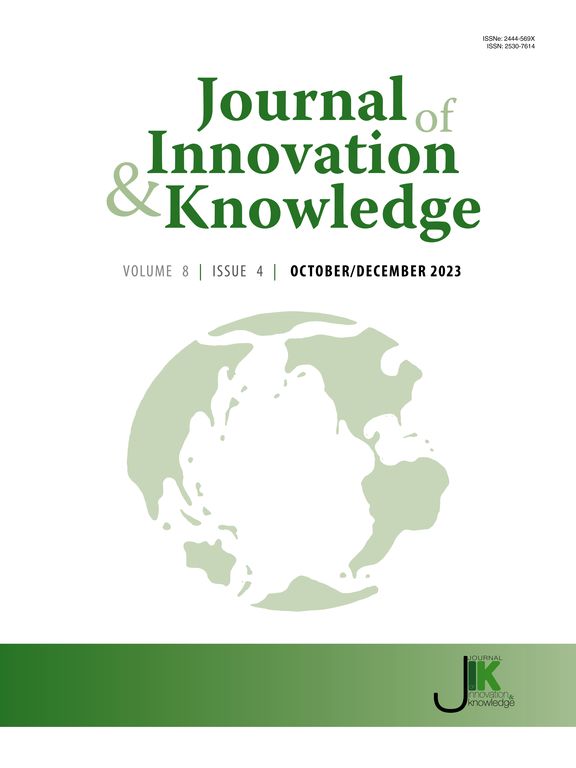Digital transformation of commercial banks with innovative credit structure
IF 15.5
1区 管理学
Q1 BUSINESS
引用次数: 0
Abstract
Digital transformation is widely acknowledged as a pivotal factor in reducing banks’ marginal costs and enhancing the efficiency of credit risk management. Concurrently, it allows banks greater flexibility to adapt to shifts in market conditions, thereby optimizing adjustments to credit scale and structure. Despite these recognized benefits, the extant literature has yet to comprehensively analyze the specific mechanisms through which digital transformation impacts banks’ credit operations. This study addresses this research gap by examining how digital transformation dynamically affects the supply of bank credit, with the objective of offering valuable insights to bank management and policymakers. This study utilizes panel data from commercial banks and employs a nonlinear difference-in-differences (DID) approach to analyze the mechanisms and determinants of how digital transformation affects the credit supply scale and structure. The findings indicate that while digital transformation via policy guarantees does not significantly alter the overall credit scale, it significantly influences the credit structure, encouraging banks to enhance credit provision to small and micro-enterprises (SMEs). These findings are robust to various tests. This study reveals that the digital transformation mechanism introduces novel data elements for policy guarantees, facilitates the digitalization of banking operations, reduces costs, and improves risk management, thereby steering the credit structure toward SMEs. The impact of digital transformation is not uniform across banks; differences in management and information-screening capabilities lead to heterogeneous effects on credit structures. Notably, the impact of policy-guaranteed digital transformation on credit structure is more pronounced in non-local commercial banks with regional operations. To validate these conclusions, this study examines 2061 loan records from 42 banks, confirming that digital transformation effectively redirects commercial banks’ credit supply towards enterprises and the real economy. This research offers theoretical insights for refining policy guarantee frameworks, accelerating the digital transformation of commercial banks, and bolstering their credit support for SMEs.
商业银行数字化转型与信贷结构创新
数字化转型被广泛认为是降低银行边际成本、提高信贷风险管理效率的关键因素。同时,它使银行能够更灵活地适应市场条件的变化,从而优化信贷规模和结构的调整。尽管有这些公认的好处,但现有文献尚未全面分析数字化转型影响银行信贷业务的具体机制。本研究通过研究数字化转型如何动态影响银行信贷供应来解决这一研究缺口,旨在为银行管理层和政策制定者提供有价值的见解。本研究利用来自商业银行的面板数据,采用非线性差中差(DID)方法分析了数字化转型影响信贷供给规模和结构的机制和决定因素。研究结果表明,虽然通过政策担保进行的数字化转型不会显著改变整体信贷规模,但会显著影响信贷结构,鼓励银行增加对小微企业(SMEs)的信贷供应。这些发现经得起各种测试。研究发现,数字化转型机制为政策担保引入了新的数据要素,促进了银行业务的数字化,降低了成本,改善了风险管理,从而引导了信贷结构向中小企业倾斜。数字化转型对各银行的影响并不统一;管理和信息筛选能力的差异导致了对信贷结构的异质影响。值得注意的是,政策担保的数字化转型对具有区域业务的非本地商业银行信贷结构的影响更为明显。为了验证这些结论,本研究分析了来自42家银行的2061笔贷款记录,证实了数字化转型有效地将商业银行的信贷供应转向了企业和实体经济。本研究为完善政策担保框架、加快商业银行数字化转型、加大对中小企业的信贷支持力度提供了理论见解。
本文章由计算机程序翻译,如有差异,请以英文原文为准。
求助全文
约1分钟内获得全文
求助全文
来源期刊

Journal of Innovation & Knowledge
Multiple-
CiteScore
16.10
自引率
12.70%
发文量
118
审稿时长
37 days
期刊介绍:
The Journal of Innovation and Knowledge (JIK) explores how innovation drives knowledge creation and vice versa, emphasizing that not all innovation leads to knowledge, but enduring innovation across diverse fields fosters theory and knowledge. JIK invites papers on innovations enhancing or generating knowledge, covering innovation processes, structures, outcomes, and behaviors at various levels. Articles in JIK examine knowledge-related changes promoting innovation for societal best practices.
JIK serves as a platform for high-quality studies undergoing double-blind peer review, ensuring global dissemination to scholars, practitioners, and policymakers who recognize innovation and knowledge as economic drivers. It publishes theoretical articles, empirical studies, case studies, reviews, and other content, addressing current trends and emerging topics in innovation and knowledge. The journal welcomes suggestions for special issues and encourages articles to showcase contextual differences and lessons for a broad audience.
In essence, JIK is an interdisciplinary journal dedicated to advancing theoretical and practical innovations and knowledge across multiple fields, including Economics, Business and Management, Engineering, Science, and Education.
 求助内容:
求助内容: 应助结果提醒方式:
应助结果提醒方式:


